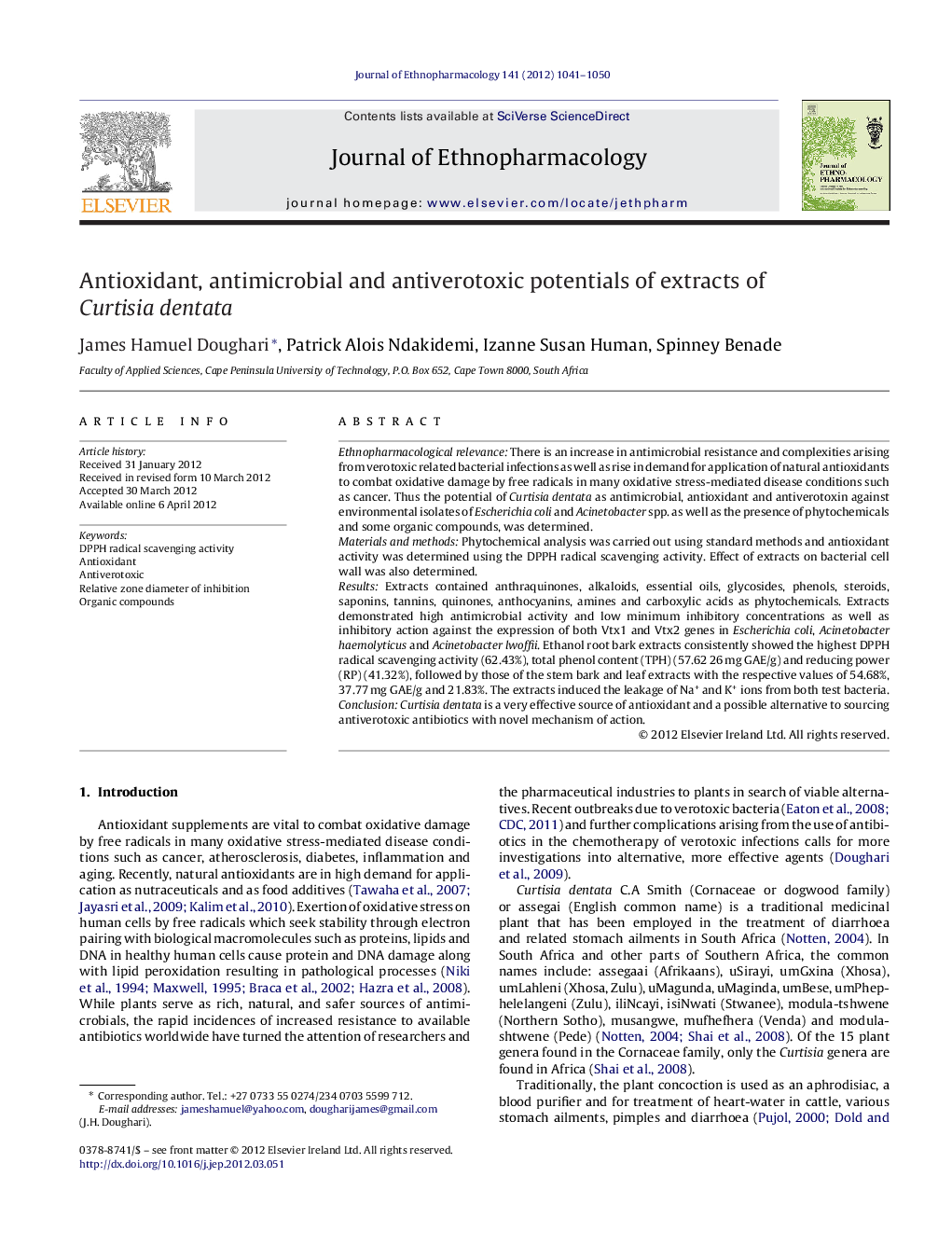| Article ID | Journal | Published Year | Pages | File Type |
|---|---|---|---|---|
| 5838007 | Journal of Ethnopharmacology | 2012 | 10 Pages |
Abstract
Ethnopharmacological relevanceThere is an increase in antimicrobial resistance and complexities arising from verotoxic related bacterial infections as well as rise in demand for application of natural antioxidants to combat oxidative damage by free radicals in many oxidative stress-mediated disease conditions such as cancer. Thus the potential of Curtisia dentata as antimicrobial, antioxidant and antiverotoxin against environmental isolates of Escherichia coli and Acinetobacter spp. as well as the presence of phytochemicals and some organic compounds, was determined.Materials and methodsPhytochemical analysis was carried out using standard methods and antioxidant activity was determined using the DPPH radical scavenging activity. Effect of extracts on bacterial cell wall was also determined.ResultsExtracts contained anthraquinones, alkaloids, essential oils, glycosides, phenols, steroids, saponins, tannins, quinones, anthocyanins, amines and carboxylic acids as phytochemicals. Extracts demonstrated high antimicrobial activity and low minimum inhibitory concentrations as well as inhibitory action against the expression of both Vtx1 and Vtx2 genes in Escherichia coli, Acinetobacter haemolyticus and Acinetobacter lwoffii. Ethanol root bark extracts consistently showed the highest DPPH radical scavenging activity (62.43%), total phenol content (TPH) (57.62 26Â mg GAE/g) and reducing power (RP) (41.32%), followed by those of the stem bark and leaf extracts with the respective values of 54.68%, 37.77Â mg GAE/g and 21.83%. The extracts induced the leakage of Na+ and K+ ions from both test bacteria.ConclusionCurtisia dentata is a very effective source of antioxidant and a possible alternative to sourcing antiverotoxic antibiotics with novel mechanism of action.
Related Topics
Health Sciences
Pharmacology, Toxicology and Pharmaceutical Science
Pharmacology
Authors
James Hamuel Doughari, Patrick Alois Ndakidemi, Izanne Susan Human, Spinney Benade,
